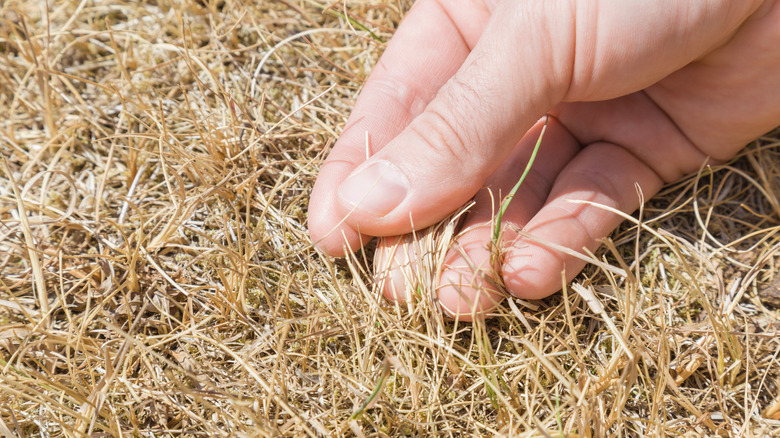Some people think that it’s a waste of a beer if you drop it on your lawn, while others think it’ll just feed your lawn to make it grow bigger and stronger. Lawn experts have suggested for decades diluting beer with water and pouring it onto your lawn, particularly on brown patches. But is beer fertilizer a real lawn hack? The truth is that yes, it is a waste of a beer, and no, it won’t turn your lawn into a thriving, vibrant green carpet.
The theory behind using beer to promote lawn growth revolves around the belief that certain components found in this fermented bevvie could potentially serve as a source of nourishment for plants. Supporters of this idea suggest that the sugar, yeast, and other vital “nutrients” might provide a fertilizing boost to your turf. For instance, yeast contains B vitamins that are beneficial for plant growth, while the sugar could plausibly serve as a source of energy for the microbes living in your soil. Unfortunately, transforming your turf from a drab shab to a lushious lawn just isn’t going to happen if you soak it in booze. That’s because this bubbly beverage doesn’t contain the three vital nutrients that plants really crave: nitrogen, phosphorous, and potassium. So if you’re looking to incorporate beer into your gardening routine, it’s probably best to either crack a cool one for yourself or pour some on your compost.
It’s not what plants crave

Contrary to popular belief, the only reason you should be pouring beer onto your lawn is to make an offering to the earth. That’s because pouring this fermented brew on your lawn can have a seriously negative impact on not just the foliage, but the soil, too. While beer contains some nutrients, the concentrations are too low to have any significant impact on grass growth. On top of that, the alcohol content in beer can actually stunt root growth, which means giving your green a guzzle can weaken the very foundation that supports healthy grass development. Additionally, the yeast and sugar can also disturb the microbial balance in the soil. Also known as the microbiome (like the human stomach), the soil microbiome consists of beneficial bacteria and fungi that help with nutrient cycling, improving soil structure, and suppressing disease.
Case in point, beer will do more harm than good. Grass requires a delicate balance of nutrients, water, and care to flourish. Instead of relying on myths and shortcuts and trying to excuse the accidental keg tumble that happened at your last barbecue, you should focus on proven lawn care practices like proper watering, regular mowing, and routine fertilization to get the lawn of your dreams.
Just clean up the beer
If you find yourself with a beer spill on your lawn due to either experimenting or negligence (it happens), then it’s important to address it as soon as possible. To clean it up, simply dilute the beer with water by lightly irrigating the area. You don’t want to drown out your lawn, either, so be cognizant of how much water you actually pour on it. This should solve the issue, or at least prevent things from getting worse. If you choose to leave it be, just note that you’ll probably see your lawn choking and turning yellow.
Remember that the two main ingredients in beer are yeast and sugar. Besides that ending up as a sticky mess, there are other living entities besides humans that enjoy these two carb-heavy ingredients. Insects and fungi will consider your spillage to be an invitation to move in and take over. No one wants to deal with a pest infestation or a bunch of bees on their lawn, and dealing with a bacterial or fungal infection can make things even worse. So remember, clean up your beer, or else you’re going to end up with a much larger and more expensive problem: full lawn replacement.